5 Tips for Pelvic Floor Health
The pelvic floor is an important group of muscles that support your bladder and bowel within the pelvis. For females the pelvic floor is particularly important for supporting the uterus and should be a priority after childbirth. Take a look at our Pre & Post natal physiotherapy services.There are five things males and females should think about if they are experiencing incontinence, heaviness in the pelvic floor region, or, for females, if they have had children.
Pelvic Floor Anatomy
Female
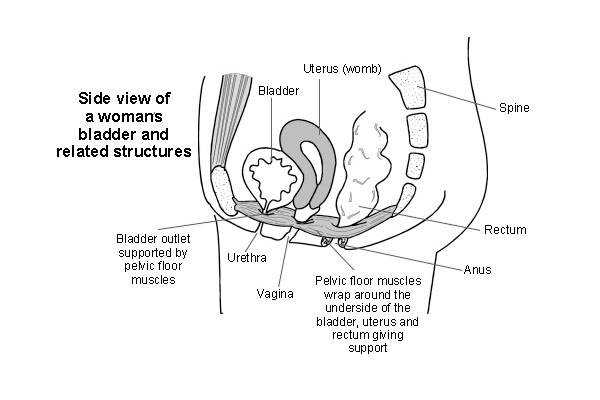
Male
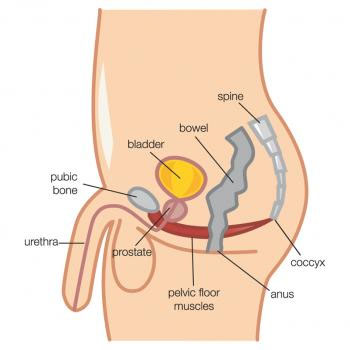
1. Good bowel habits
Not only do you need to train your pelvic floor muscles, but you also need to train your bladder and bowel. Quite frankly, pushing on the toilet or running to the toilet due to loose stools will continue to stress your pelvic floor and are very uncomfortable to deal with on a daily basis.
Having a healthy bowel consists of easily passing soft well-formed bowel movements regularly. However, regular can mean different things to different people so anywhere from 3 times a day to 3 times a week. You should also be able to hold your bowel movement until you get to a toilet and the bowel movement should occur within one minute of sitting down. Bowels love routine, so find your ‘regular’ and make it a habit!
Constipation is bad for your pelvic floor. If you are struggling with constipation, you should try and get to the root of the problem. Make a diary of what foods you eat and any symptoms you have after each meal, documenting what kind of bowel movements and when they occur. You can use the Bristol Stool Chart for this.
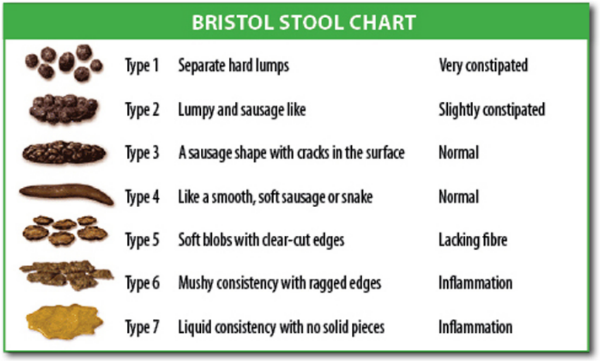
You may notice in your meal diary that you are lacking fibre, both soluble and insoluble. Soluble fiber can be found in oats, nuts and apples and insoluble fiber can be found in seeds, whole-wheat bread and brown rice. In combination with adequate water intake, they play a huge roll in keeping things regular on the journey through your digestive tract.
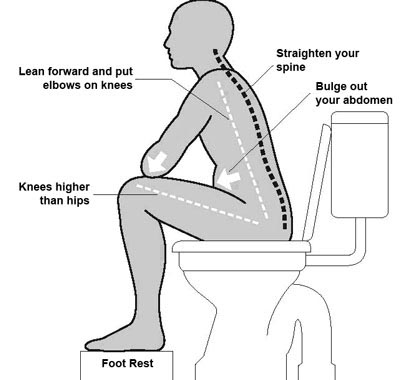
Another factor in constipation is the position you sit on the toilet. We were designed to squat in order to open our bowels and toilets don’t fit into that. So use a step stool to get your knees above your hips, lean forward with your elbows resting on your knees and let your belly relax. Your bowel will open as it was designed and straining your pelvic floor will not be necessary.
2. Good bladder habits
A well-trained bladder will significantly help your pelvic floor and its ability to hold when you have the urge to run to the toilet.
Remembering to drink enough water throughout the day is very important for your bladder and general health. This means drinking enough water throughout the day to replenish any fluid lost through metabolism, bodily functions, daily activities and exercise. The daily recommended intake for an adult is 1.5-2 liters of water, just water, and should increase with hot weather or activity such as exercise. Are you drinking enough water?
However, it’s not just about how much but the quality of your fluid intake. Although it’s not what you want to hear, caffeine and alcohol are bladder stimulants. What this means is your bladder is told to empty before it should causing increased frequency in urination. What’s the problem here, you ask? Increased frequency means your bladder is unable to fill and stretch and this decreases the overall hold capacity of the bladder overtime and ultimately increasing your frequency.
One of the first things I look at with all pelvic floor clients experiencing incontinence is fluid intake and output. How much and what fluid is going in and when and how much fluid is coming out. On average your bladder should empty 4-6 times a day and 0-1 times during the night with a volume of 300-600ml. If a client comes back saying they empty their bladder 8-10 times a day then fluids need to be adjusted or they need coaching on how to hold on.
A bad habit that has developed over the years is going ‘just in case’. Going to the toilet before you leave the house or because you happen to be near a toilet is common, but not a great method to help your bladder. This will also lead to the increased frequency cycle. So instead of creating this bad habit, use strategies that will help you train your bladder and pelvic floor to hold on. Deferment strategies include: crossing your legs, sitting on the corner of the chair to apply pressure, contracting your pelvic floor muscles or if in standing then drop one hip. If none of those are working then distraction is always a good option. Defer for as long as you can to gradually train your bladder and pelvic floor to hold on.
3. Early assessment
It is common to forget about your pelvic floor. Like any injury or illness, the early treatment is best. There are some signs that your pelvic floor may need to be assessed:
- Leaking urine during laughing, coughing, sneezing or exercising
- Having the urge to go to the toilet but not making it in time
- Difficulty emptying your bladder
- The feeling of ‘heaviness’ or pain in the pelvic floor area
Your pelvic floor muscles may be stretched and weakened or too tight. Many things including pregnancy, a long history of back pain, being overweight, heavy lifting, chronic cough or sneeze, prostate surgery and general aging cause pelvic floor problems. If you are experiencing any symptoms or have concerns about your pelvic floor health then getting an assessment is the first thing you should do.
As a physiotherapist, I use a non-invasive technique for assessments called real-time ultrasound. It only takes a few minutes and a full bladder. It can provide me with a lot information on the strength of your pelvic floor and the treatment needed.
4. Exercise for your pelvic floor muscles
If you have a weakened or stretched pelvic floor then you need to strengthen it. Exercising your pelvic floor muscles is important for both men and women. Strengthening the muscles provides support for your bladder and bowel so that you have better control. It can also improve sexual function. Just like any other muscle the pelvic floor needs regular exercise to stay strong. If you are currently pregnant, read about best exercises during pregnancy.
The first step to exercising your pelvic floor is making sure you know where it is and how to activate it. An assessment is the best way to do this. There are also a few simple things you can check at home. The easiest way to identify your muscles is to stop the flow of urination mid stream while on the toilet. This is not an exercise and should not be used regularly. It is a simple quick test to see if you can activate your pelvic floor muscles.
Another simple way to identify the pelvic floor is to sit upright with thigh and bottom muscles relaxed. Now try to tighten the muscle around the back passage then release. Complete this a few times to make sure you have the right muscles. If you can’t feel a distinct lift of your pelvic floor or you can’t stop the flow of urination then you need an assessment with a physiotherapist. An assessment will help you to identify the pelvic floor muscles.
Once you know how to use your pelvic floor muscles then getting an idea of your current strength is the next step. The best way to measure this is counting how long you can hold your pelvic floor activation. This time will be different for everyone. Make sure your pelvic floor activation is strong and tight regardless of the number a seconds you can hold. A good goal is to aim for 8-10 seconds with every pelvic floor activation. Always relax for an equal amount of time before activating the pelvic floor again.
I try and tailor each pelvic floor training program based on the individual and their current problems. However, in my next tip I will discuss how to maintain general pelvic floor health and give specific training guidelines.
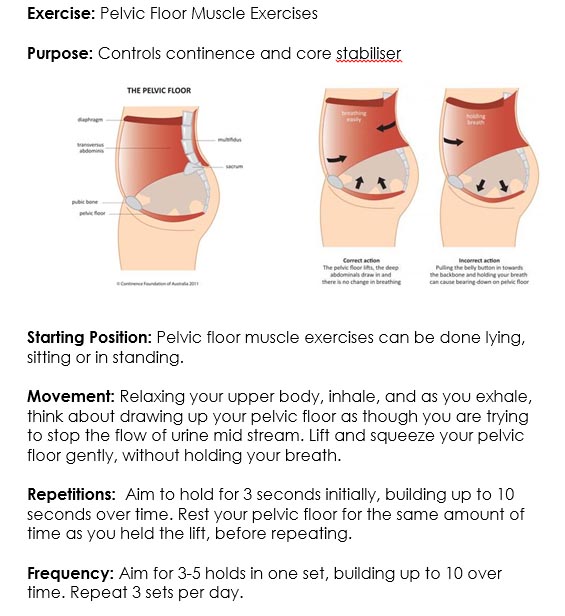
5. Maintaining your pelvic floor strength
Maintaining pelvic floor strength is the same as any muscle, it takes regular exercise. An easy formula for maintaining your pelvic floor strength is to complete three sets of 8-12 holds. For example, hold your pelvic floor for 8 seconds and relax for 8. Repeat this 8-12 times and you have done one set. Repeat this again two more times during the day and you have completed three setThis may sound like a lot of pelvic floor training, but the good thing is no one can tell if you are exercising. This means you can incorporate it in to your daily routine easily. Pelvic floor training can be done in sitting, lying or standing. Try your exercises on your drive to work, lounging on the couch or standing at a crosswalk. Try and find something that you do majority of days during the week so it will be consistent.
The pelvic floor is a complicated muscle but with a few simple changes it can be easy to take care. If you are experiencing any issues please book in to have an assessment completed. Please refer to The Continence Foundation of Australia for more information http://www.continence.org.au/ .


